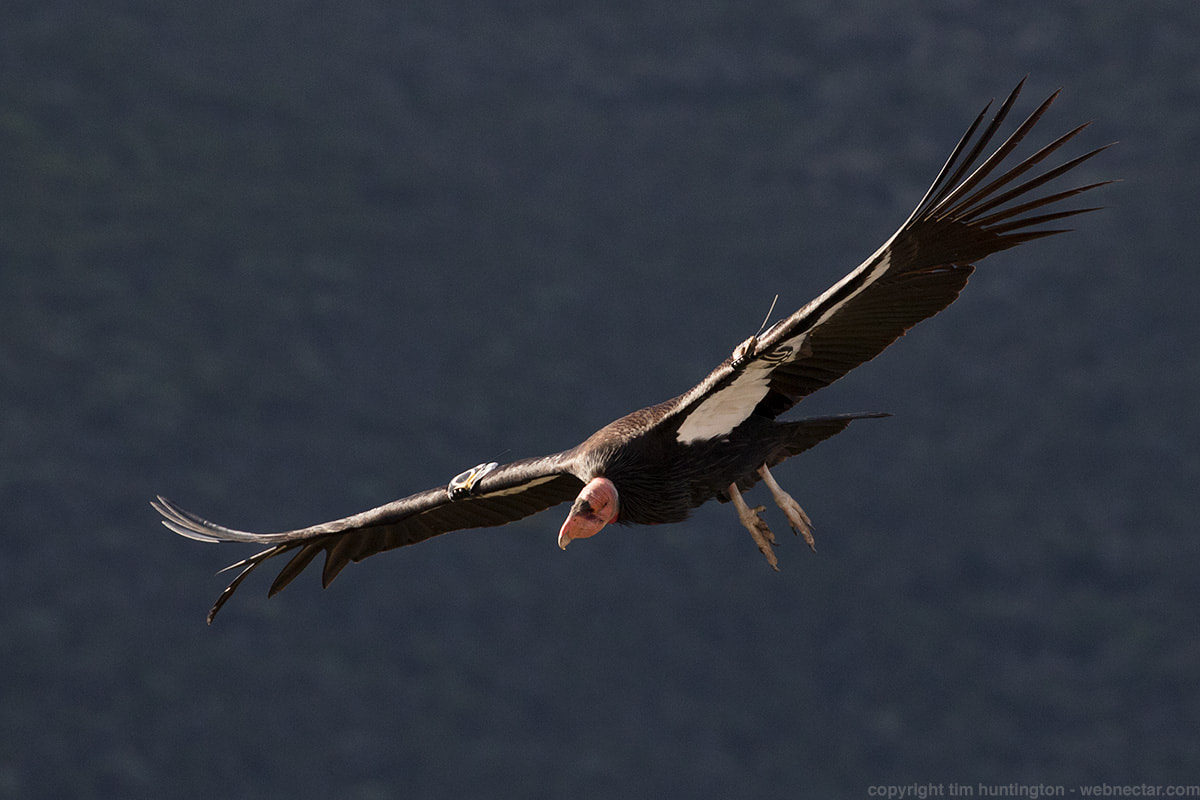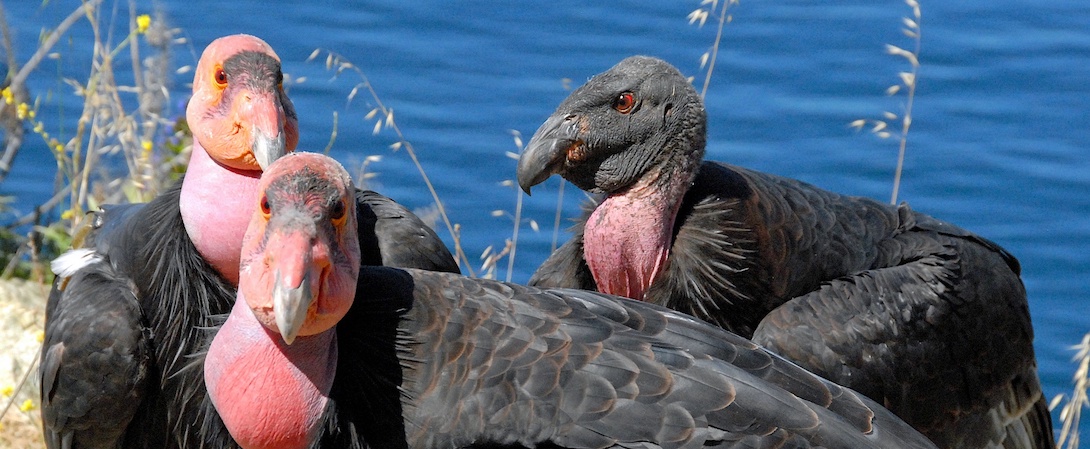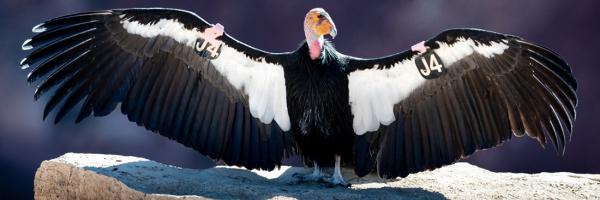About Condors
General Overview

The spectacular but endangered California Condor is the largest bird in North America. These superb gliders travel widely to feed on carcasses of deer, pigs, cattle, sea lions, whales, and other animals.
Live Condor Cams
Physical Description
As described by English naturalist George Shaw in 1797

The adult California condor is a uniform black with the exception of large triangular patches or bands of white on the underside of the wings. It has gray legs and feet, an ivory-colored bill, a frill of black feathers surrounding the base of the neck, and brownish red eyes.The juvenile is mostly a mottled dark brown with blackish coloration on the head. It has mottled gray instead of white on the underside of its flight feathers.
The condor's head and neck have few feathers, and the skin of the head and neck is capable of flushing noticeably in response to emotional state, a capability that can serve as communication between individuals. The skin color varies from yellowish to a glowing reddish-orange.The birds do not have true syringeal vocalizations. They can make a few hissing or grunting sounds only heard when very close.
Conservation
Explanation of the Recovery Plan and Reintroduction into the Wild

As the condor's population continued to decline, discussion began about starting a captive breeding program for the birds. Opponents to this plan argued that the condors had the right to freedom, that capturing all of the condors would change the species' habits forever, and that the cost was too great.
As the number of condors grew, attention began to focus on releasing some back into the wild. In 1988, the United States Fish and Wildlife Service began a reintroduction experiment involving the release of captive Andean condors into the wild in California. Only females were released, to eliminate the possibility of accidentally introducing a South American species into the United States. The experiment was a success, and all the Andean condors were recaptured and re-released in South America.
In modern times, a wide variety of causes have contributed to the California condor's decline. Its low clutch size (one young per nest), combined with a late age of sexual maturity, make the bird vulnerable to artificial population decline. Significant past damage to the condor population has also been attributed to poaching,[63] lead poisoning (from eating animals containing lead shot),[64] DDT poisoning,[65][66] electric power lines, egg collecting, and habitat destruction. During the California Gold Rush, some condors were even kept as pets.[67] The leading cause of mortality in nestling condors is the ingestion of trash that is fed to them by their parents.